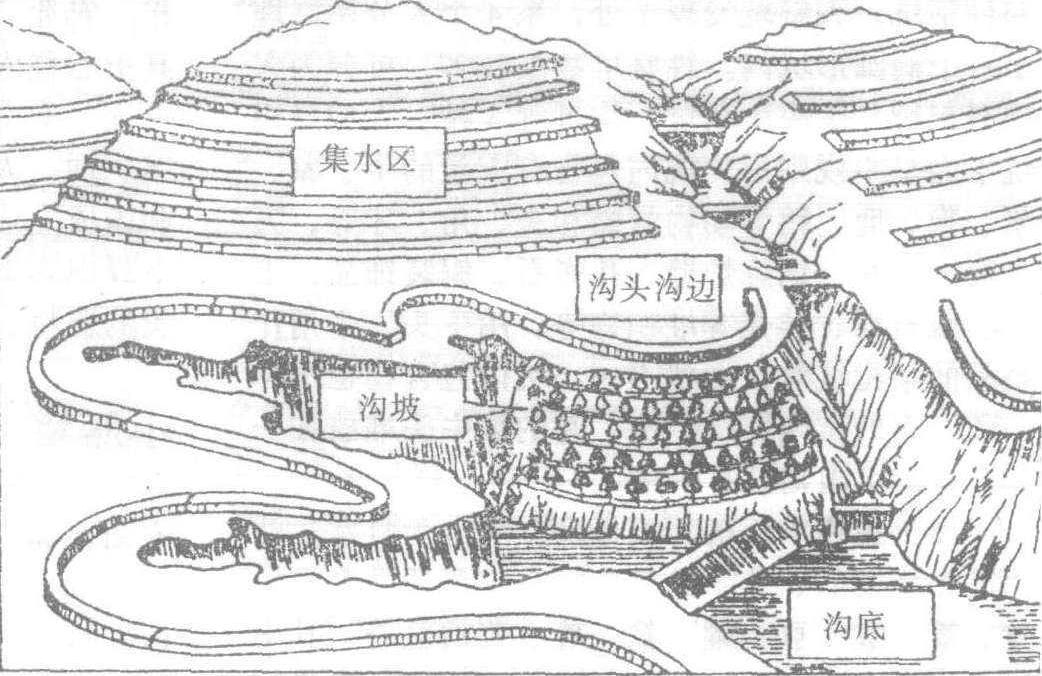小流域综合治理comprehensive control of small watershed
以面积较小的自然集水区为单元,开展以水土保持为中心的农、林、牧、水综合措施的全面治理。小流域面积一般为10~50 km2,通过全面规划,合理安排农、林、牧、副各业用地,布设水土保持农业技术、林草工程以及其他各项水土保持措施,形成综合的水土保持体系,以达到保护、改良和合理利用小流域水土资源的目的。小流域综合治理是中国开展群众性水土保持工作的主要形式,是实现农业现代化的一项重要基本建设。
小流域综合治理
由水利部黄河水利委员会绥德水土保持科学试验站完成。1985年获国家自然科学进步奖。目前在黄土丘陵沟壑区得到广泛的推广,已成为根治本区落后面貌的主要途径,是减少黄河泥沙的主要措施。
小流域综合治理
以小流域为单元,在全面规划的基础上,合理安排农、林、牧、副各业用地,实施水土保持农业耕作措施、林草措施与工程措施,做到互相协调、互相促进、形成综合防止措施体系,以达到小流域水土资源的保护,改良与合理利用的目的。小流域治理的基本原则是: 要促进农、林、牧、副全面发展,防止水土流失; 多种措施相互结合; 先治坡后治沟,先治上游后治下游; 有效解决群众的口粮、经济收入等。小流域治理主要采用的技术措施有: 水土保持农业耕作措施; 水土保持林草措施; 水土保持工程措施。在治理工程中有梯田、坡面蓄水工程、山坡截流沟、沟头防护工程、谷坊、拦沙坝、淤地坝、沟道蓄水工程、引水漫地等。

沟壑治理总体布署示意图
- 第十章 农村基层组织与精神文明建设
- 第十章 农村基层组织建设与精神文明建设
- 第十章 农村收益分配与小康建设
- 第十章 农村文化、卫生、计划生育与体育
- 第十章 农村生产关系的变革与完善
- 第十章 农村社会主义精神文明建设
- 第十章 农村经济发展回顾与展望
- 第十章 农村经济收益分配
- 第十章 区域经济与农业区划
- 第十章 地县农村经济
- 第十章 州(地、市)农村经济
- 第十章 扶贫开发
- 第十章 教育、文化与卫生
- 第十章 滁州市
- 第十章 经济管理与监督
- 第十篇 各地市概况
- 第十编 文学艺术
- 第十节 临夏城郊商品畜牧业
- 第十节 内江市
- 第十节 农业区划
- 第十节 农业区划与农业综合开发
- 第十节 农村邮电通讯
- 第十节 北海市
- 第十节 吉安地区
- 第十节 塘沽区